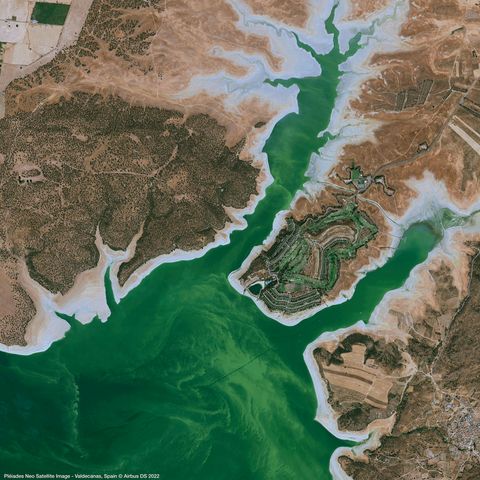Introduction to satellites for children

What would our world look like if we didn’t have satellites? One thing’s for sure: modern life would be very different. Satellites are involved in everything from communications and broadcasting to weather monitoring… but could you explain what they do in a simple yet scientific way to a child? The Airbus Foundation is here to help!
Space is fascinating, whether you’re young or old. And it’s often the thing that triggers in children a lifelong love of subjects like Science, Technology, Engineering, and Mathematics (STEM). Every year between 4-10 October countries around the world celebrate science and technology, and how these disciplines enrich our lives, as part of World Space Week. To coincide with this, the Airbus Foundation has launched a new video series about satellites.
Inma Lara Serrano, from Airbus in Tablada, Spain, has organised World Space Week activities in Seville for kids aged 8 to 13 since 2015, as part of a group of volunteers. “The educational materials developed by the Foundation make it much easier to talk to the kids about these topics: we don’t have to develop something new to present our products in an engaging way that is adapted to the right level. And we can also download games from the Foundation website to support the sessions,” explained Inma. “All these activities make kids think and question, and generate a sense of curiosity about space.”
A fun and easy-to-understand introduction to satellites
One of the Airbus Foundation’s pillars is to inspire the next generation through digital STEM content, with a focus on science and aerospace. To this end, the Foundation has developed a new mini-series of animated videos for children between the ages of eight and twelve on the theme of satellites.
Satellites have a wide range of applications, and are mainly used in our daily lives for tasks like weather forecasting, climate change and biodiversity monitoring, transmitting television broadcasts, wayfinding applications like GPS or mapping services, and online activities like social networking or gaming. They can also be used to help in emergency situations, for example in search and rescue missions.
These three videos explore how satellites are used as well as how they are made. Each video ends with a question to prompt a discussion and encourage further thought.
They are free-to-access on the Airbus Foundation Discovery Space website and available in English, French, German and Spanish.
- How do we build a satellite? This video serves as an introduction to the topic. Building a satellite is complex. This video shows the steps from build to lift-off, introducing the main components as well as the need for testing before it’s ready to go to Space.
- What are Earth observation satellites? This video looks specifically at Earth observation satellites, including those that monitor the weather and others that record data on wildlife habitats and climate change.
- What is a telecommunications satellite? This video focuses on telecommunications satellites, which allow us to share images and information all around the world by bouncing information around at the speed of light. From TV broadcasting to making a call, online gaming or even emergency rescue, this video explores the many applications for telecommunications satellites.
Inspiring the next generation
Renata Coelho, Communications Specialist at Airbus in Brazil, has used Airbus Foundation educational materials with local kids. “Here in Brazil, especially in Itajubà, near our manufacturing plant, there are vulnerable communities that we work with closely. The Airbus Foundation partnered with a national NGO involved in education programmes called CIEDS to reach out to these children. Thanks to the Airbus Foundation and CIEDS’ educational expertise, Airbus volunteers organised a three-month programme of classes for kids aged 7 to 11. In 2023, 116 kids participated in these classes, which were run in a local public school.”
The volunteers used materials developed by the Airbus Foundation Discovery Space programme to awaken an interest in science. The videos are used as a first touchpoint to spark curiosity and then the children can move onto other activities like building models. “I have received a lot of enthusiastic feedback from the kids. It is a real pleasure when you see how motivated they are by what they have learnt in the class. Kids discover a new world and it inspires them for a future career that they hadn’t considered before, reminds Coelho.”
John Chinner, from Airbus UK, is an experienced STEM ambassador and has participated in many events, including the annual World Space Week event at Guildford’s Tunsgate Quarter. “Because this event takes place in a shopping complex, we can reach both young people and their parents, who have a key role to support them in their journey towards a career in space. By showing real technologies as well as videos, we bring STEM subjects out of the textbook into real life. It is really powerful”.
“These education materials can be used by anybody,” adds Inma. So teachers, parents, or anyone who is passionate about Space shouldn’t hesitate to use them and to inspire and help young people to develop a curiosity to learn, to want to stay in school and to contribute as constructive global citizens.
All the materials produced by the Airbus Foundation are available on the Airbus Foundation Discovery Space platform.



